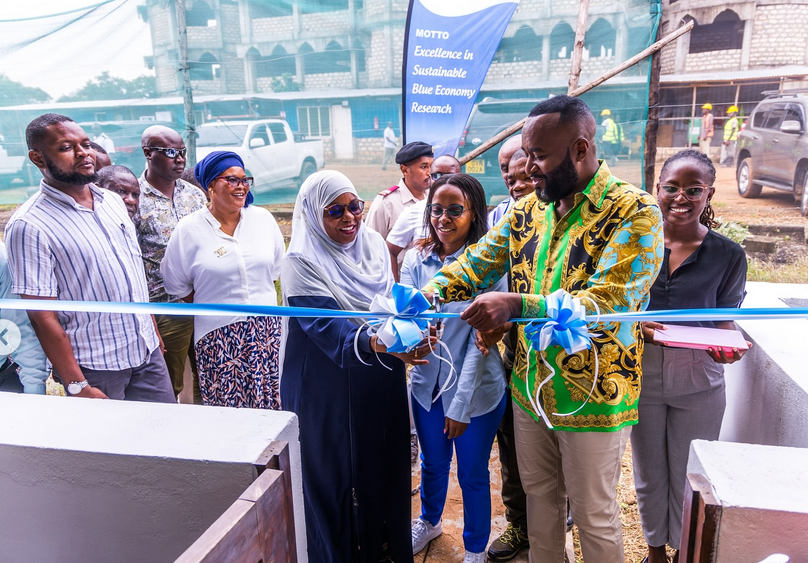

There’s fresh hope for coastal fisherfolk following the commissioning of the first National Marine Hatchery in Shimoni, Kwale county.
The facility was launched on Wednesday by Blue Economy and Maritime Affairs CS, Hassan Joho.
It is a product of collaboration between the Kenya Marine and Fisheries Research Institute (KMFRI) and the national government.
The hatchery is designed for large-scale production of fingerlings, specifically prawns and rabbitfish (locally known as 'taffi'), which are in high demand both locally and abroad.
KMFRI’s assistant director for Mariculture, Dr Antony Nzioka, said the hatchery has the capacity to produce over one million seedlings per cycle, with four cycles annually, translating to at least four million quality fingerlings every year.
“This hatchery will go a long way in addressing the challenge of seed shortage that has for long crippled the expansion of mariculture activities along the Kenyan coast,” Nzioka said.
Farmers will now be able to access affordable, quality seedlings, which will in turn boost fish and prawn production, improve livelihoods and strengthen the country’s blue economy.
“Now, farmers can access healthy fingerlings affordably and in the beginning, they’ll even be distributed free of charge as part of a pilot,” he said.
After the government-supported pilot period, a minimal cost-sharing model will be introduced to ensure the sustainability of the project.
The hatchery will also serve as a research and training centre for upcoming aquaculture farmers, students and marine researchers.
For decades, fisherfolk have relied on dwindling wild stocks for their livelihoods.
Access to quality fingerlings will improve their yields and reduce dependence on unpredictable ocean harvests.
With seedlings now readily available, farmers can venture into commercial mariculture by setting up ponds for prawn and fish farming.
He noted that the fingerlings have a short maturity period, allowing farmers to harvest every four months, creating a consistent source of income.
“This is a major step towards empowering our coastal communities. Now that the major hurdle of accessing quality seed is removed, farmers can engage in aquaculture all year round and significantly boost household income,” he said.
To further support the initiative, KMFRI has conducted extensive research on the use of locally available materials to develop cost-effective fish feed.
Nzioka pointed out that one of the biggest challenges in aquaculture is the high cost of commercial feeds, which often eats into farmers' profits.
A small-scale fish farmer from Shimoni, Omar Shaame, said the project has renewed hope for many coastal families. He said they have been depending on the ocean, but the catches are no longer reliable.
“With the hatchery, farmers can now raise fish in a pond at home and plan their income,” he said.
Prawn farmer Mwinyi Hassan said the facility will ease the burden of travelling long distances in search of quality fingerlings.
“Before, we had to go all the way to Mombasa or even wait for middlemen–and that was very expensive. Now we have our own hatchery in Shimoni. This is a huge relief,” he said.
Instant Analysis
The National Marine Hatchery in Shimoni marks a turning point for Kenya’s coastal fisheries. For decades, fisherfolk have struggled with dwindling ocean stocks and lack of access to quality fingerlings, limiting their productivity and income.
This state-of-the-art facility directly addresses those challenges by offering a reliable, local source of prawn and rabbitfish seedlings.
















